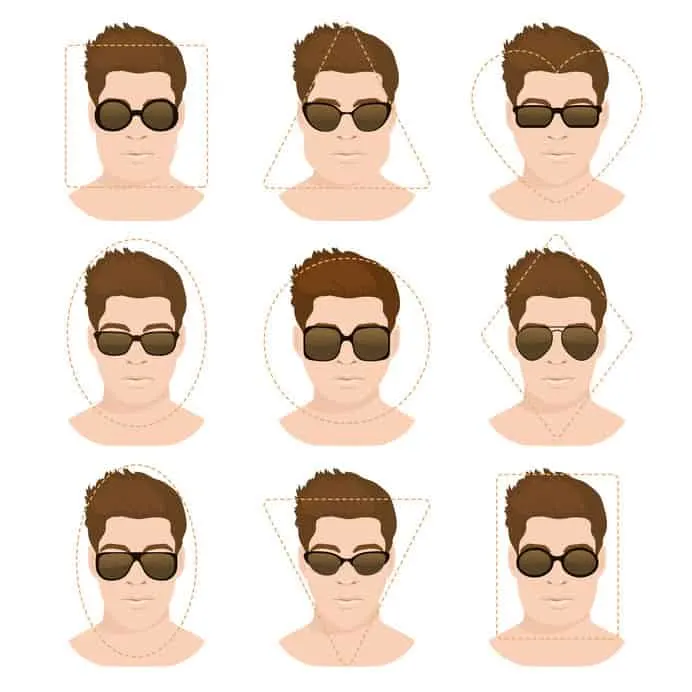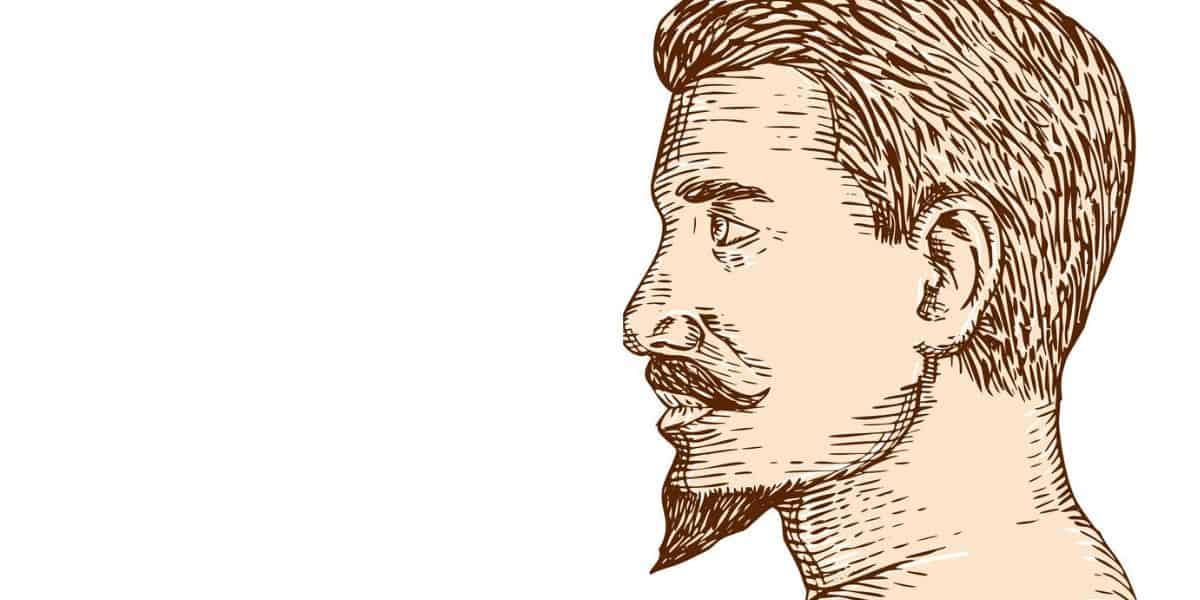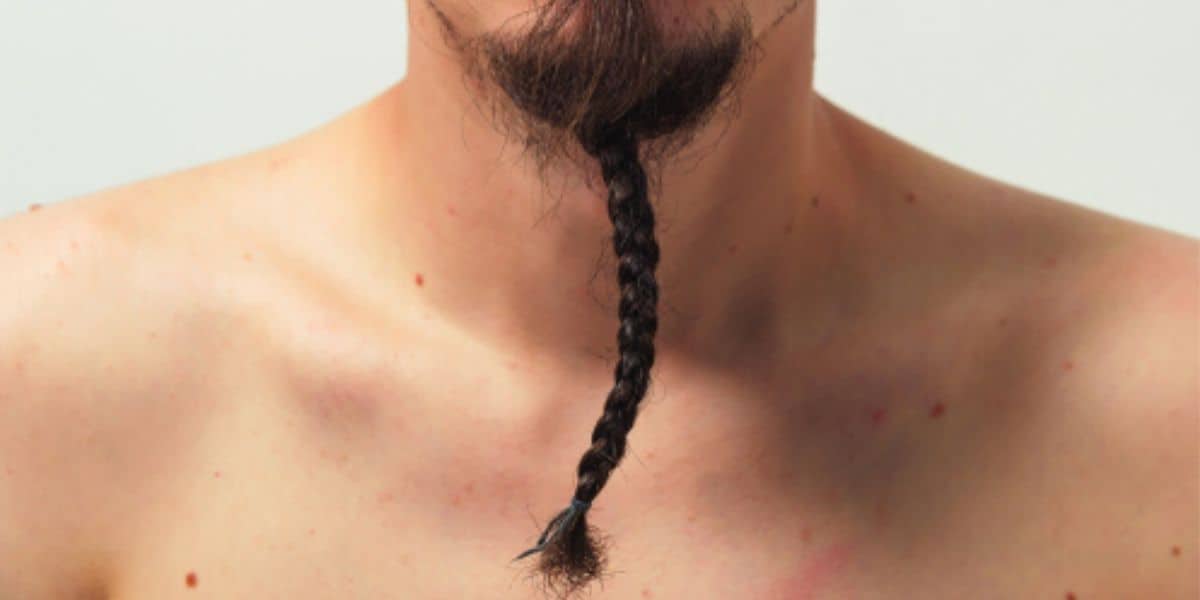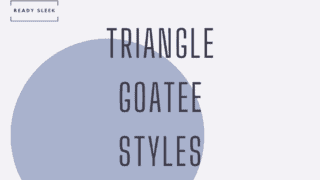The perfect goatee length – is there such a thing?
I would actually say there was. Somewhere in the ether exists a goatee length so suited to your face that it would be a devastating crime to not actively seek it out.
Having said that, there isn’t a universal, one-size-fits-all goatee length that is guaranteed to work for you. It’s a little bit more complicated than that.
The main factors to consider are face shape, maintenance requirements, and distribution. I’ll be discussing each of these factors in turn. Consider this a guide to crafting your ultimate goatee. Not anyone else’s – just yours.
Following this, I’ll talk you through a step-by-step tutorial on how to trim your ideal goatee length once you’ve chosen one. Trust me, it isn’t rocket science.
After this, I’ll round up by talking through a couple of other frequently asked questions. Picking the best goatee length may seem like the most important consideration at times.
Don’t get me wrong – it’s certainly important. But in real terms, symmetry, distribution and overall grooming habits are just as important. Anyway, that’s not what you came for.
Let’s get to it!
How To Use Face Shape To Pick A Goatee Length

This should be your number one priority when selecting a goatee length. You’ve probably seen swathes of grooming articles on face shape before, ranting and raving about why it’s so stylistically important.
This train of thought isn’t wrong – it’s definitely crucial to consider. But don’t overthink it. It can be frustrating trying to label yourself as “triangle-faced” or “square-faced”, etc. This pigeon-holing can get a bit ridiculous.
In reality, most people’s faces don’t fit comfortably into one of these pockets of convenience. That’s why it’s important to be aware of the principles as opposed to the rules.
Here are the need-to-knows:
- Goatees tend to elongate the chin and subsequently the entire face.
- If your face is “long”, you’ll want to keep the goatee short.
- If your face is “broad”, “short”, or “round”, you can afford to keep it long.
- Goatees can add depth and fullness to the chin.
- Men with weak chins can use longer goatee lengths to strengthen the chin.
It doesn’t need to get any more complicated than that. For the sake of completeness, however, we can briefly go through typically “long” and “short” face shapes.
Long faces include oblong, inverted triangles, and rectangles. Short or broad faces include round faces and square faces.
It may not be particularly useful to take these literal face shapes to heart. Use them as a guide. Determine whether you want to elongate your chin and face, and whether you want to add fullness and depth to your chin.
Keep it simple.
Other Factors When Choosing An Ideal Goatee Length
Other than face shape, there are two important factors to consider when determining the “best” length for your face.
1. Maintenance requirements and convenience
As a general rule, it’s safe to presume that the longer your goatee, the more maintenance it will require. How important this is to you is, of course, down to personal preferences.
There are several reasons for why longer goatees have an increased maintenance requirement. One is that trimming becomes more complex.
With shorter goatee lengths, you can quite comfortably maintain it by running your trimmer or clipper over it every few days.
Although you’ll probably have to trim a shorter goatee more frequently, it’ll take up less of your time cumulatively because of how simple the procedure is.
But with longer goatee lengths, it isn’t as simple. Particularly long goatees will most likely need an electric device to take care of the bulk, with scissors to neaten things up and remove the strays and scraggly.

Longer beard lengths also require additional grooming habits. The benefits of beard brushing, particularly for longer goatees, are widely accepted. Starting to brush early is also considered good practice. Once you have around 4 weeks of growth, investing in a decent boar bristle beard brush may be the best option.
When it gets long enough for tangles to form within the depths of the goatee, a beard comb may also become important. The teeth of the comb can actually reach the depths of a longer goatee and detangle the knots. Once you’ve got around 10 – 12 weeks of growth, a beard comb may be a suitable addition to your grooming artillery.
Applying beard oil to a longer goatee would also prevent the flaking and dryness they’re more susceptible to. My personal opinion is that drop of beard oil would be worth applying even on medium stubble. But when it comes to longer goatees, it almost becomes a requirement.
Finally, styling products might also become necessary. Longer goatees are less likely to stay the way you want them to.
Perhaps you want a pointed goatee or a handlebar mustache to go with it. Some beard balm or beard wax may become your best friend as that goatee grows longer and longer.
2. Patchiness and distribution
It’s no secret that the patchiness of facial hair is just more obvious at certain stages of growth. For example, heavy stubble can reveal some bare spots that short stubble didn’t. But grow it out 5mm longer and those patches may fill themselves out.
Every man’s distribution is different, and it’s likely that you’ll notice your goatee becoming patchy at certain phases of growth.
That’s another reason why goatee length should also be determined by your distribution. Ask yourself at what length your goatee appears fuller and less patchy (if this is important to you.
Fortunately, a goatee usually completely removes the typically patchiest areas of the face; the cheeks. That’s one of the key benefits of goatees in general.
But yes, the goatee area itself (chin beard and mustache) can also be patchy during certain phases. In fact, the chin beard and mustache not connecting properly is a common complaint among goatee enthusiasts.
How To Trim The Perfect Goatee Length
Hopefully, after reading the concepts and principles listed above you’ve got an idea as to what length you might go for. Once you’ve decided on one, it’s time to put all this technical knowledge into practical use.
This is a succinct, step-by-step tutorial on how to practically achieve your ideal goatee. The goatee variant we’ll be discussing is the vintage, Full Goatee consisting of a connected chin beard and mustache.
If these two components don’t quite connect in your specific goatee, don’t worry. Keep them disconnected, as disconnected goatees can look fantastic.
1. Trim the whole beard down to your goatee length
As I mentioned earlier, the tool you use to do this depends on your length. If it’s particularly short, an electric trimmer or clipper will be more than reasonable.
Set the adjustable length to your ideal goatee length, and start trimming the entire beard down to it. This includes areas you’ll eventually shave such as the neck and the cheeks.
The reason for this is that it’ll be much easier to trim a good goatee outline during the next step if all of the hair is even.
You can vary the goatee length slightly in certain areas to make it look more even overall. This may sound odd, but it makes sense if you think about it.
For example, if the mustache is thicker than the chin area, trimming the mustache just 0.5mm – 1mm shorter can lead to a more even-looking goatee at the end.
If you’ve got a longer goatee length, you may not feel comfortable using an electric trimmer or clipper. These do carry a real risk of trimming off too much bulk if you aren’t careful.
You may want to simply neaten the outline of your long goatee and trim any stray hairs sticking out. The best way of doing this would be to use a pair of beard scissors. You’ll have much more control, although it’s certainly more time-consuming.
If all you’re doing is neatening up with scissors, this is usually best done after you sculpt your goatee outline in step 2. This is in contrast to shorter goatee lengths, where it’s a better idea to trim with clippers or trimmers before you start sculpting your goatee outline.
2. Trim the goatee edges and cheeks
It’s now time to actually form the shape of the goatee itself. In other words, sculpt the goatee.
To trim the sides of your goatee, follow the natural extension of the mustache downward on either side. This should ensure that the sides aren’t too vertical and the goatee doesn’t become too narrow.

To trim the outline of your goatee, an electric device will be necessary. It doesn’t need to be fancy, although a T-blade would be ideal. Simply use the naked blade of your clipper or trimmer to trim the outline of the goatee sides you visualized using the method above.
Follow the natural curve of your mustache downward until you meet the jawline.
Then, trim your cheeks down using the naked blade of your device. You’ll probably want to remove all of it, as goatees traditionally don’t include any cheek hair. There are, however, exceptions such as the goatee with stubble.
At this point, you’ll want to decide whether or not to remove or keep the soul patch. If you choose to keep it, make a point to trim the stray hairs either side of it and beneath it. This will enhance the appearance of the goatee very significantly.
3. Carve out a solid neckline
How important this step is also depends on the goatee length. Longer goatees with long chin beards flowing downward do obscure the neckline and so make it less visible. In these cases, it may not be as important to trim a good neckline, but it still is important.
A good neckline usually lies around two finger-widths above the Adam’s Apple. This isn’t a hard-and-fast rule, but it’ll probably serve you well.
A goatee neckline is usually narrow – well, as narrow as the goatee itself. But still, make a point to maintain it. Trim it using the naked blade of your device again, and proceed to remove any hair and neck stubble that lies beneath it.
By this point, your goatee is very nearly done. Now, it’s about the finishing touches.
4. Shave for the best results
The previously hairy areas you’ve just trimmed down with the naked blade of your electric device are probably barely noticeable at this point. Namely, the cheeks and the neck.
However, trimming with the naked blade of a trimmer or clipper do leave behind very short stubble. Although most people may not mind this, for the best and most sleek results, shaving over this area is a good idea.
Be sure to use shaving gel, oil, or another form of lubrication if you do choose to do it. You can use a manual, safety, or straight razor to do it. In addition, use the blade to sharpen and hone the outline of the goatee itself. It’s a good opportunity to do this.
A straight razor is best for defining these lines, but do take some practice and know-how.
5. Moisturize
If you have read any of my other tutorials, you’ll probably know that this is how I like to finish them.
Shaving irritates the skin, so soothe that irritation with moisture. The best and most convenient source of moisture following a trim is a good-quality moisturizing cream.
Frequently Asked Questions
Here are some FAQs you may find helpful. These may have been on your mind. If not, read through them anyway in case there are any concepts you may not have previously thought of.
What Length Should The Goatee Be Under The Chin?
The length of the goatee under the chin should be as far down as the neckline you’ve defined. The neckline, as I mentioned above, should be approximately two finger-widths above the Adam’s Apple.
Once you start to approach this concept like this, the actual length of the goatee hair under the chin becomes less important. It becomes more important to ensure that the area under the chin should be carefully confined to a well-defined neckline.
Neck stubble should be avoided at all costs.
Is There An Average Or Typical Goatee Length In mm?
The average or “typical” goatee length in mm is very hard to define, simply just because of how universally popular this style is. The length of a goatee varies hugely among individuals and across different cultures.
However, current trends in Western societies are shifting toward shorter goatee lengths. The “pencil goatee” is growing in popularity and is essentially a stubble-length goatee trimmed very thin. So thin it resembles a line drawn by a pencil.
If you wanted to put a number on it, the goatee length would be around 3mm – medium stubble.
These shorter goatee lengths are probably growing in incidence due to how popular they are among celebrities, including actors and athletes. They’re also incredibly versatile, effortlessly fitting into even the most corporate and stringent of workplaces.
But overall, a specific “average” or “typical” goatee length for the world as a whole would be incredibly difficult to calculate. I don’t believe that research has been formally carried out yet, and I don’t envy the brave soul that dares to take on the task.
How Do You Maintain A Permanent Goatee Length?
This may sound like an oddly worded question, but it makes sense. I don’t believe I’ve properly addressed it in this article yet.
Essentially, what it asks is how you keep or appear to keep the same length of goatee all the time.
To do this, you’ll need to regularly – and I mean regularly – undertake the trimming ritual I outlined above.
The frequency with which you do it will determine how well you pull off the “permanent goatee length” facade.
It also depends on how long the goatee is. Funnily enough, shorter goatees will require an increased frequency of trimming than longer goatees. This is because small increases in length are more noticeable the shorter the hair is overall.
Untidiness and poor grooming are also more noticeable when facial hair is particularly short.
To give you an example, to maintain a goatee length at the popular 3mm medium stubble mark, you’ll most likely want to run your trimmer over it every 3-4 days to keep it looking consistent.
Unfortunately, there’s simply no alternative to regularly maintaining a goatee. This includes trimming (most importantly) as well as other grooming habits such as beard brushing and oiling for longer goatees.
Conclusion
There you have it. An in-depth guide to selecting a proper, ideal goatee length. Hopefully, the core concepts and principles I’ve highlighted here will stick with you and guide your future facial hair decisions.
Although they’re specific to goatees in this article, they can easily be translated and applied to different styles.
I hope you found that useful. As always, experiment and have fun.
Ready Sleek founder. Obsessed with casual style and the minimalist approach to building a highly functional wardrobe. Also a fan of classic, vintage hairstyles.







